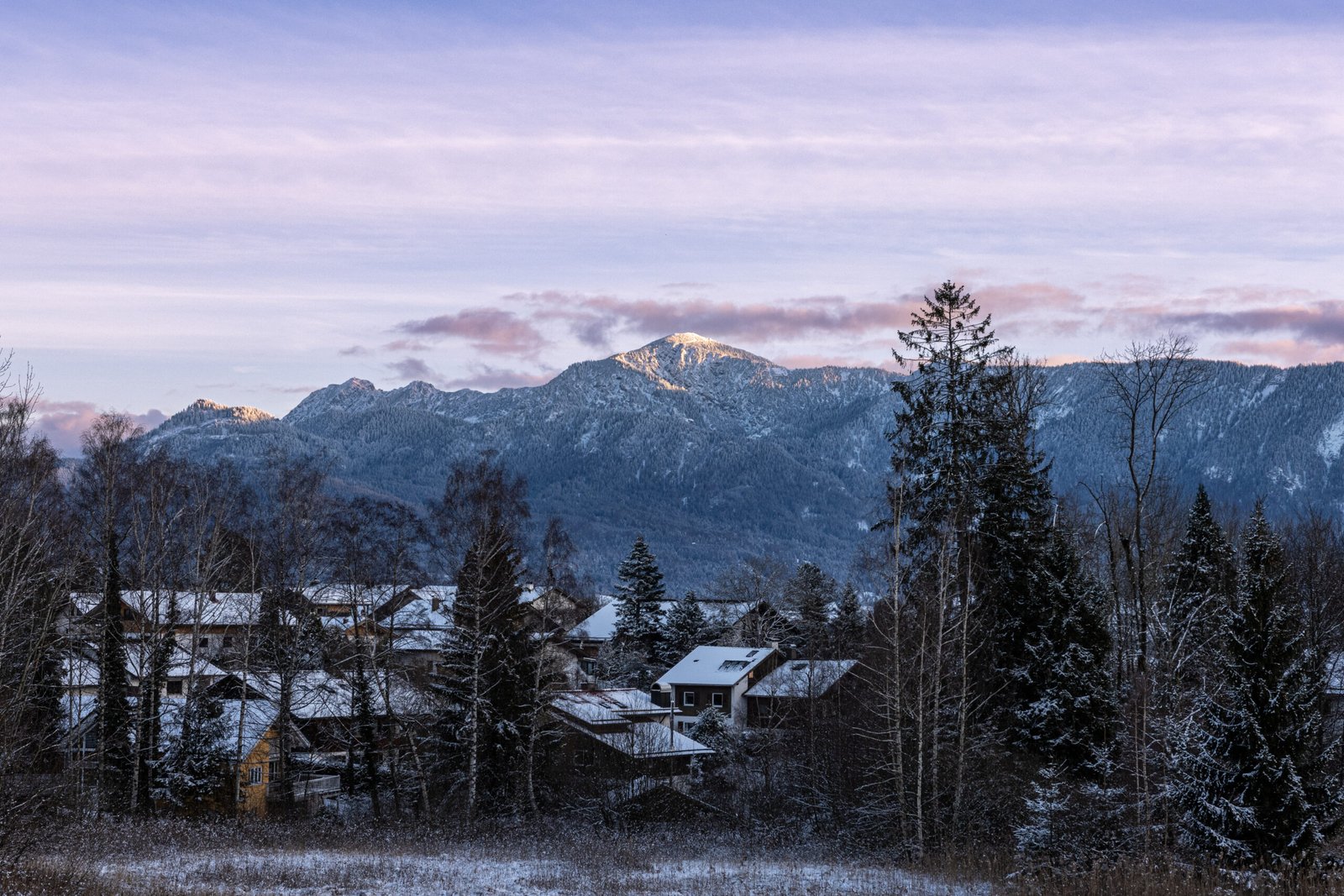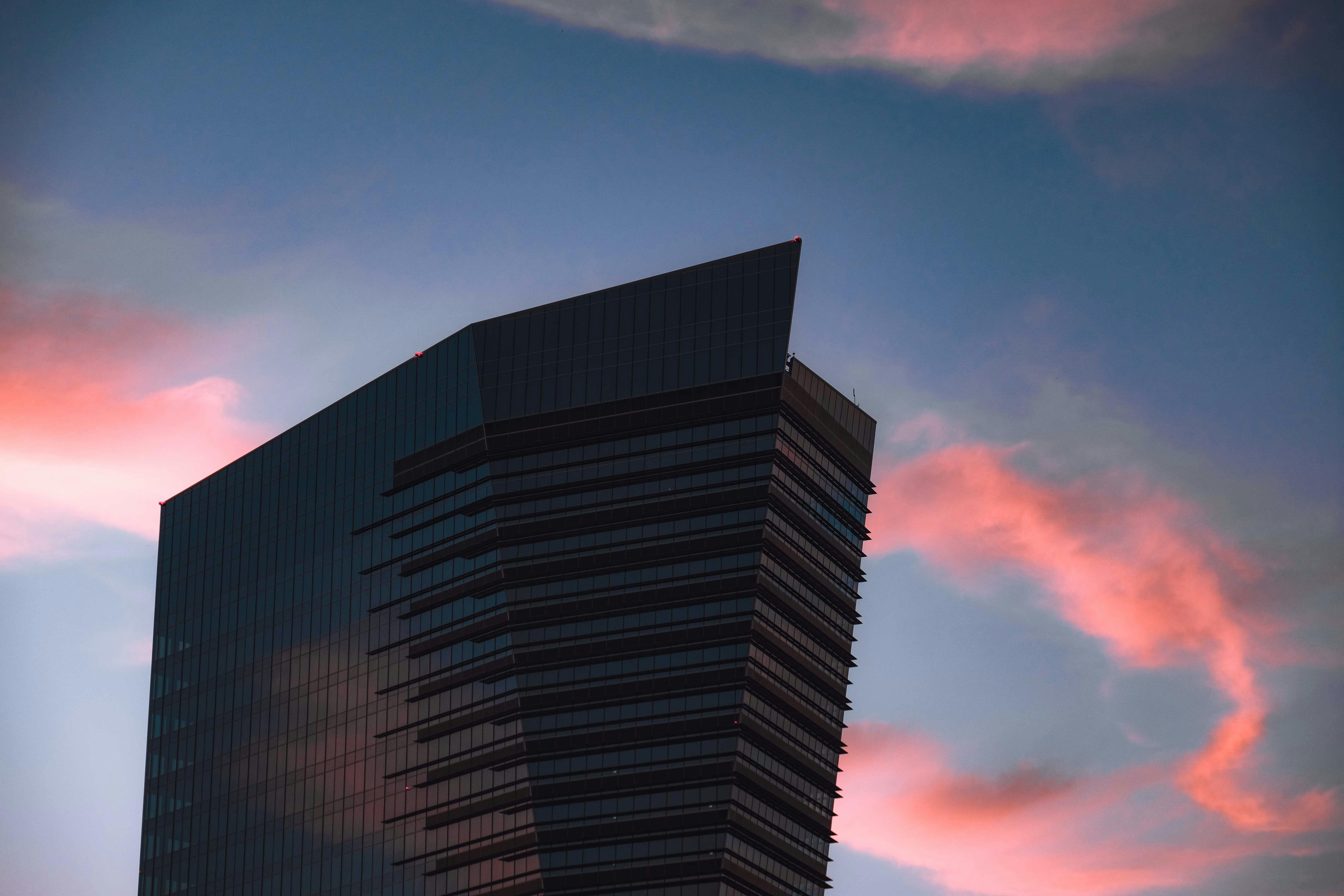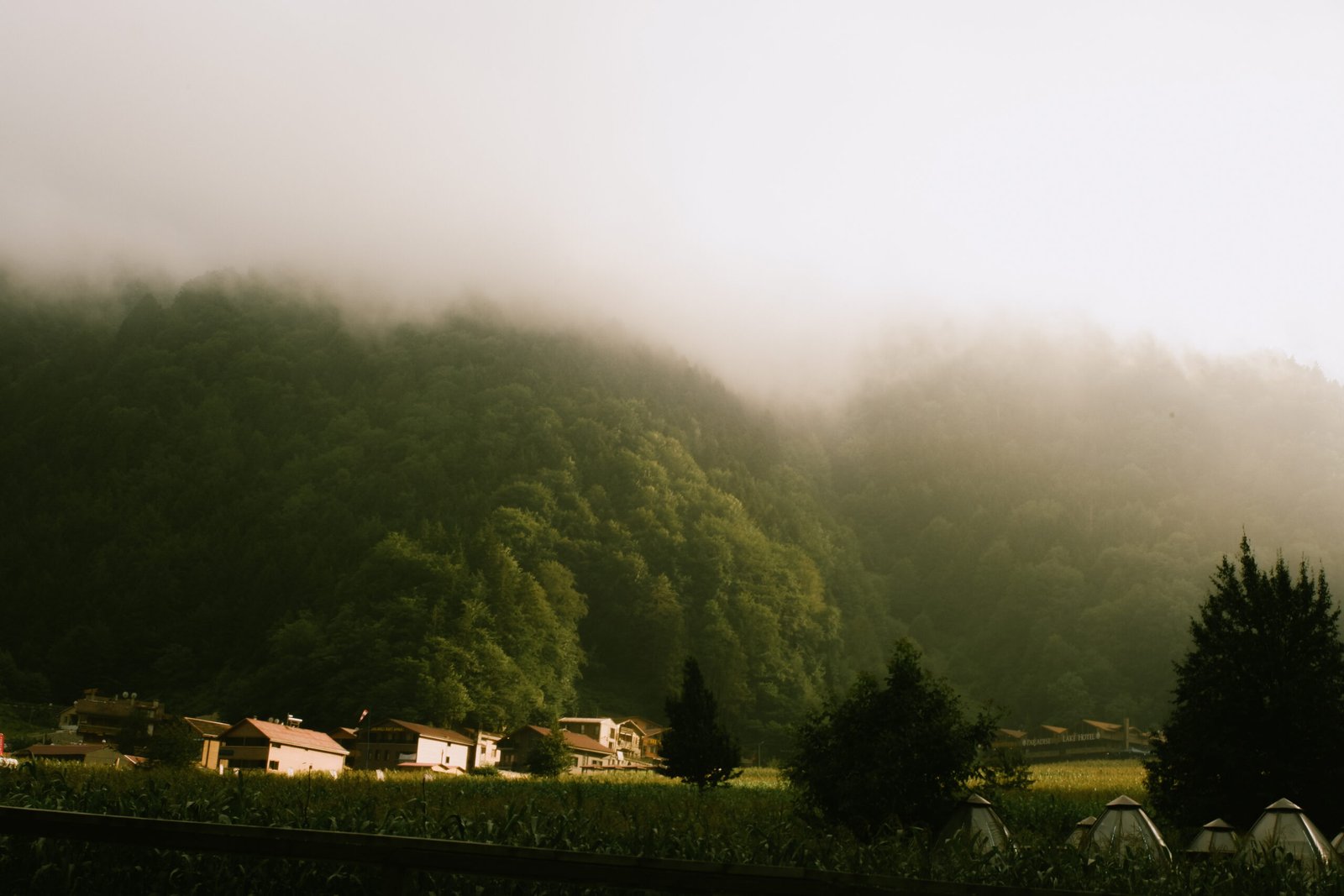
Holy Cross, Alaska
Imagine a place so remote and untouched by the hustle and bustle of everyday life that it feels like stepping into a different era altogether. This is Holy Cross, Alaska, a small city tucked away in the Alaskan wilderness. Surrounded by breathtaking landscapes and a rich history, Holy Cross offers a unique glimpse into the traditional way of life, providing a rare opportunity to disconnect from the modern world and embrace the tranquility of this hidden gem. With its captivating charm and undeniable allure, Holy Cross is a destination that promises to captivate your senses and leave an indelible mark on your heart.
History
Holy Cross, Alaska has a rich history that dates back to its early settlement by indigenous peoples. The area was inhabited by Athabascan people for hundreds of years before European settlers arrived. The first contact with Russians occurred in the 19th century when Russian fur traders and explorers began to venture into the region. This Russian influence had a lasting impact on the culture and traditions of Holy Cross, as well as the presence of the Russian Orthodox Church, which still plays a significant role in the community today.
During the Gold Rush era in the late 19th century, Holy Cross experienced a surge in population as prospectors flocked to the area in search of gold. The discovery of gold in the nearby Yukon River led to the establishment of mining camps and a boom in economic activity. The town of Holy Cross became an important transportation hub and supply center for those seeking their fortune in the gold fields. While the gold rush eventually subsided, its impact on the community can still be seen in the architecture and historical remnants that remain today.
Geography
Holy Cross is situated in western Alaska, along the banks of the Yukon River. Its location in the heart of Alaska’s Interior makes it a remote and isolated community, surrounded by the vast wilderness that characterizes the region. The town is nestled between rolling hills and offers stunning views of the surrounding landforms and the river. The geography of Holy Cross lends itself to outdoor recreational activities such as hiking, fishing, and wildlife viewing.
The climate in Holy Cross is influenced by its northern latitude and proximity to the Arctic Circle. Winters are long and cold, with temperatures often dropping well below freezing. The area experiences heavy snowfall, which can make travel and transportation challenging. Summers, on the other hand, are relatively short and mild, with temperatures averaging in the 60s. The unique climate of Holy Cross adds to its allure and provides a backdrop for both residents and visitors to appreciate and adapt to.

Demographics
The population of Holy Cross is small, with just over 200 residents. Most of the community is made up of Alaska Native peoples, predominantly of Athabascan descent. The cultural heritage of the indigenous population is deeply intertwined with the fabric of Holy Cross and is celebrated and preserved through various means. The town is proud of its diverse population, and the cultural richness that comes with it is evident in the customs, language, and traditions that are passed down from generation to generation.
English is the primary language spoken in Holy Cross, but there is also a strong presence of the traditional Athabascan language. Efforts to preserve and revitalize the native language are in place, ensuring that younger generations continue to learn and appreciate their linguistic heritage. This linguistic diversity further enhances the cultural tapestry of Holy Cross and is something that residents take great pride in.
Economy
Given its remote location, the economy of Holy Cross is primarily reliant on subsistence activities and traditional industries. Fishing is a mainstay of the local economy, with residents relying on the bounty of the nearby Yukon River for sustenance and income. Salmon, in particular, plays a crucial role in the lives of Holy Cross residents, with fishing seasons dictating much of the community’s rhythms and activities. The salmon caught in the river not only serves as a vital food source but also provides economic opportunities through commercial sales.
Subsistence activities are also an essential part of life in Holy Cross. Hunting and gathering are deeply ingrained in the culture, and residents rely on the resources of the surrounding wilderness to supplement their diets and provide for their families. Traditional practices, such as the preparation and preservation of fish and meat, are passed down through generations, ensuring that these subsistence activities remain a vital and cherished aspect of Holy Cross’s way of life.

Transportation
Due to its remote location, transportation in and out of Holy Cross presents unique challenges. Air travel is the most common and convenient mode of transportation, with the town being served by a small airport. Regular flights connect Holy Cross to other regional hubs and provide essential access for both residents and visitors. Air travel also allows for the transportation of goods and supplies, ensuring that the community remains connected to the outside world.
River transportation is another important means of getting in and out of Holy Cross. The Yukon River serves as a vital transportation artery, with boats and barges transporting goods, supplies, and people to and from the community. The river also offers recreational opportunities, with residents and visitors enjoying fishing and boating activities during the summer months.
Roads are limited in Holy Cross, and there is no direct road access to the town. However, there are trails and paths that provide local transportation options, especially during the winter months when frozen rivers and lakes serve as natural highways for travel in and around the area. Snowmobiles and ATVs are commonly used for transportation within Holy Cross, allowing residents to navigate the rugged terrain and reach remote areas.
Infrastructure
The housing in Holy Cross primarily consists of small, single-family homes and cabins. Due to the remote location and limited resources, housing options may be limited, but the community is resourceful in meeting its needs. Many homes are self-built or passed down through generations, reflecting the close-knit nature of the community. Despite the challenges of extreme weather conditions, residents take pride in maintaining their homes and creating a welcoming environment for their families.
Access to electricity and water can be challenging in Holy Cross, given its remote location. The town relies on generators and solar power to provide electricity, with some households utilizing a combination of renewable and traditional energy sources. Freshwater is sourced from nearby rivers and lakes, and residents are mindful of water conservation practices to ensure a sustainable supply. These infrastructure challenges highlight the resilience and self-sufficiency of Holy Cross residents in adapting to their unique environment.
Healthcare in Holy Cross is provided through a combination of local clinics and telemedicine services. Medical professionals visit the community regularly, offering essential healthcare services and preventive care. Telemedicine has become an increasingly valuable resource, connecting residents to specialists and experts in various fields. Despite the limited resources, healthcare professionals strive to provide comprehensive and quality care to Holy Cross residents.

Culture
The culture of Holy Cross is deeply rooted in traditions and customs that have been passed down through generations. Athabascan traditions are an integral part of daily life, and residents take great pride in preserving and celebrating their cultural heritage. Traditional activities such as fishing, hunting, and gathering continue to play a vital role in the community, providing not only sustenance but also a connection to the land and the ancestors who have come before.
Celebrations and festivals are important events in Holy Cross, bringing the community together to honor their traditions and share in the joy of their cultural heritage. The Russian Orthodox Church also plays a significant role in the community, with religious ceremonies and rituals being an important part of life in Holy Cross. The rich tapestry of customs, celebrations, and religious practices creates a vibrant and unique cultural experience for residents and visitors alike.
Art and music are also integral to the culture of Holy Cross. Traditional Native artwork, such as beadwork and carvings, showcase the craftsmanship and artistic talents of the community. These pieces often depict scenes from nature and are imbued with cultural significance. Music, especially traditional drumming and dancing, is a cherished form of artistic expression and a way to celebrate and preserve the cultural traditions of Holy Cross.
Education
Holy Cross is home to a small school that serves the educational needs of the community. The school provides education from kindergarten through high school, offering a comprehensive curriculum that combines academic subjects with cultural teachings. The unique cultural heritage of Holy Cross is integrated into the educational experience, ensuring that students have a deep understanding and appreciation of their roots.
Challenges in education arise due to the remote location and limited resources. Access to quality educational materials and resources can be limited, but educators in Holy Cross are committed to providing the best possible education for their students. Initiatives such as distance learning programs, partnerships with educational organizations, and community involvement are implemented to overcome these challenges and provide a well-rounded education for the youth of Holy Cross.

Tourism
While remote and off the beaten path, Holy Cross offers attractions and activities that appeal to adventurous travelers seeking an authentic Alaskan experience. The stunning natural beauty of the surrounding area, with its rolling hills, pristine rivers, and breathtaking vistas, provides an ideal backdrop for outdoor enthusiasts. Hiking, fishing, and wildlife viewing are popular activities, allowing visitors to immerse themselves in the untamed wilderness and witness the abundant wildlife that calls Holy Cross home.
Holy Cross also offers services for visitors, including accommodations, guided tours, and cultural experiences. Those seeking a unique perspective on the community can take part in cultural events, visit the local museum to learn about the history and traditions, and even try their hand at traditional activities such as fishing or beading. The warmth and hospitality of the residents further enhance the tourism experience, as visitors are welcomed into the close-knit community and given a glimpse into the daily life of Holy Cross.
Challenges
Holy Cross, like many remote communities, faces challenges that are inherent to its location and isolation. Limited access to services is a common issue, with residents sometimes having to travel long distances to access healthcare, educational resources, or other essential services. The remote location also presents challenges in terms of transportation and logistics, making it difficult to transport goods and supplies in and out of the community.
Isolation can also have an impact on mental health and overall well-being. The long winters and harsh climate can be challenging for some individuals, and the lack of regular social interaction can contribute to feelings of loneliness or isolation. Community initiatives are in place to address these challenges, providing support and resources to those in need and promoting a sense of connection and belonging within the community.
Finally, Holy Cross, like many Alaskan communities, is facing the impacts of climate change. Rising temperatures, melting permafrost, and changing precipitation patterns are affecting the ecosystem and the way of life for residents. These changes can impact subsistence activities such as hunting and gathering, as well as the overall environmental stability of the region. Holy Cross is working to adapt to these changes and implement sustainability initiatives to ensure a healthy future for the community and its unique environment.
In conclusion, Holy Cross, Alaska, is a remote and culturally rich community with a history deeply rooted in its indigenous heritage. The town’s location along the Yukon River, its unique climate, and the resilience of its residents contribute to a vibrant and unique way of life. Despite the challenges posed by its isolation and limited resources, Holy Cross continues to thrive, preserving its traditions, celebrating its culture, and offering visitors a true Alaskan experience.

